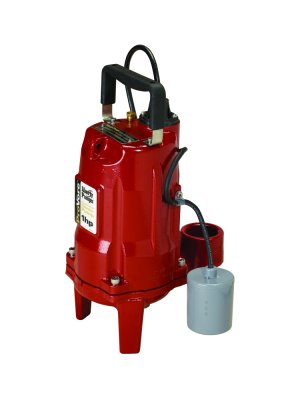Click here to Subscribe to Chips Tips Blog
Sump Pump Selection: Tips to Choose the Right System for Your Space

Here at Gravenhurst Plumbing, Heating & Electric, we have seen all kinds of sump systems over the decades.
To say all sump pump systems are not created equally would be a massive understatement!
However, most homeowners don’t have the benefit of sump installation, repair and replacement knowledge the way we do. This can make it pretty hard to choose the best new sump pump!
In this post, learn what you need to know about different types of sump pump systems, the proper way to back up your sump system and how to choose a contractor who will install your sump properly the first time.
2 Main Types of Sump Pump Systems
There are two main types of sump pump systems: the pedestal and the submersible. Let’s talk a little bit more about how they work and the benefits and drawbacks to each.
Pedestal sump pump.
A pedestal sump pump sits in the sump pit but is not submerged in water. If you have ever lived in an older construction space, you probably had a pedestal sump.
A pedestal sump is ideal for small spaces with narrow sump pits. They are more economical to install and easier to repair because the pump motor is easy to reach.
However, pedestal sump pumps don’t handle large volumes of water or solids very well. They are also a lot noisier when they are in operation because there is nothing to mask the sound of the motor running.
Submersible sump pump.
A submersible sump pump places the sump pump motor in water deep at the bottom of the sump pit. These sumps are now the gold standard in most new construction spaces.
A submersible sump pump is ideal for larger spaces where the sump pit can be bigger and broader. They are going to make less noise because the pit masks the sound of the pump. The presence of the water can also keep the pump motor cooler during periods of heavy use.
However, they are harder to repair because the sump motor is submerged at the bottom of the pit. They also tend to be more expensive to purchase and install.
Key Elements to Look for in a New Sump Pump System
Once you have decided which type of sump pump, the pedestal or the submersible, is the right fit for your basement space, it is time to turn your attention to other key elements of a high-quality sump system.
Cast iron or aluminum core.
Any sump system you invest in should feature a cast iron core or aluminum core rather than a plastic core.
Cast iron or aluminum tolerates heat much more readily during high-intensity use, such as after a serious rain storm or water main break.
Choosing a strong, sturdy sump pump core will guard against motor failure and extend the useful life of your new system.
Sturdy with solids.
It can be hard to anticipate in advance the volume of solids your sump system may have to cope with.
Here, the best strategy is to choose a sump pump that is equipped to handle heavy solids from the outset. Look for a sump pump with a no-screen pump intake and a solids-ready impeller (this should measure one-half inch or greater).
Alarm-equipped.
A sump pump system won’t be much good to you if it overfills without sending out an alert. Any sump system you invest in should have an alarm sensor that triggers when the water in the sump pit rises above a certain baseline level.
Mechanical switch with solid float.
You want a sump pump with a solid float and a mechanical (not pressure) switch so it will keep operating even when waterlogged. Otherwise, you run the risk that the switch will not toggle off, which will keep your sump running until the motor itself burns out!
Lidded.
If you opt for a submersible sump pump, be sure to add a lid from the start. This will keep gravel, dirt and debris out of the pump motor mechanism and will also further dampen operational noise. A lid can also decrease the humidity in your basement air.
Your Sump System Isn’t Complete Without a Backup!
Thus far, the discussion has centered around purchasing options for your primary sump pump system. But there is one more component you need to install to be sure your home and basement stays safe from water damage.
Most primary sump pumps run on electricity. This makes relying on a sump pump during a power outage a very dangerous proposition. And since power outages and extreme weather go hand-in-hand, it is likely just a matter of time before your powered primary sump system is knocked out during a severe thunderstorm.
Here, what you need is a backup sump system. There are different methods to accomplish this, including installing a generator or using a water-powered backup pump.
But the most reliable method by far is to simply install a secondary sump pump that operates via a battery. This secondary sump system will kick into operation when the power goes out and your primary sump system is unable to do its job.
Without a secondary or backup sump pump system in place, your entire home investment is extremely vulnerable to water damage from any number of causes.
Most battery-powered backup sump systems can run for up to two days without the need to recharge the battery.
Another perk that often comes along with installing a backup sump pump system is that it may net you a reduction in your homeowner’s insurance premiums.
Get in Touch
Do you need guidance for selecting the right sump pump system for your basement space?
Contact us online or give us a call at 877-885-3403.
P.S. Don’t forget to sign up to receive Chip’s Tips by email each month - it's free!

